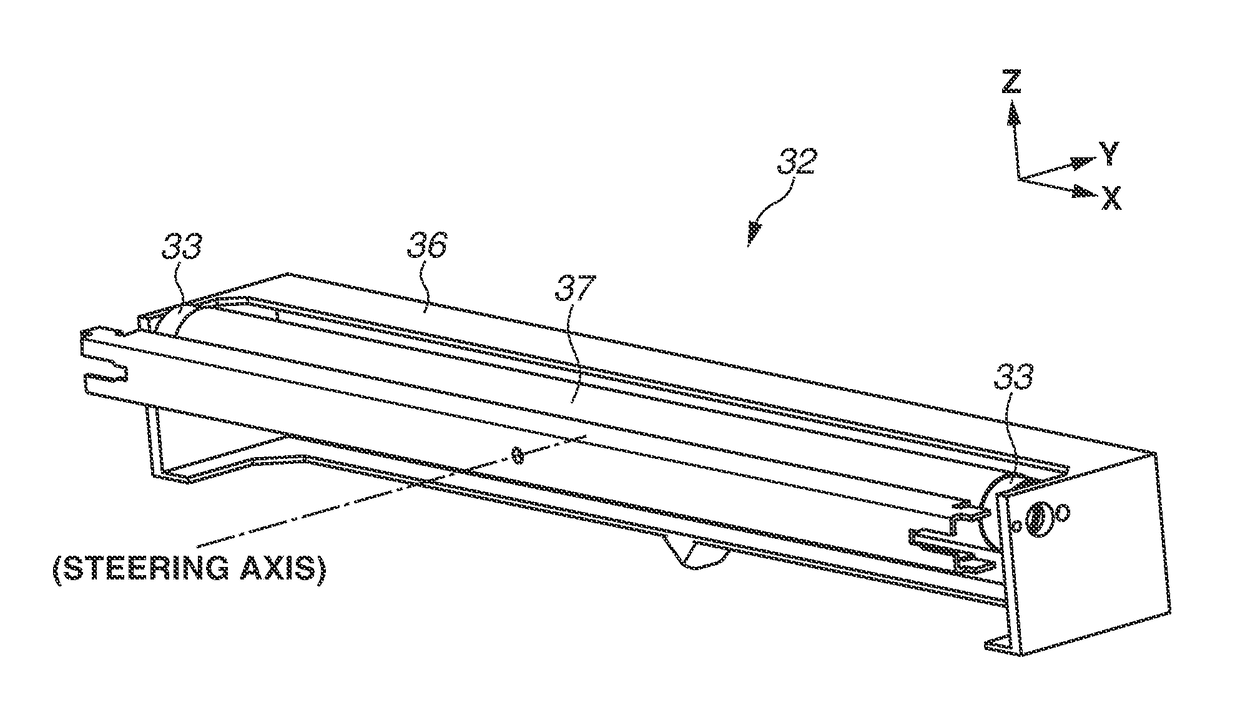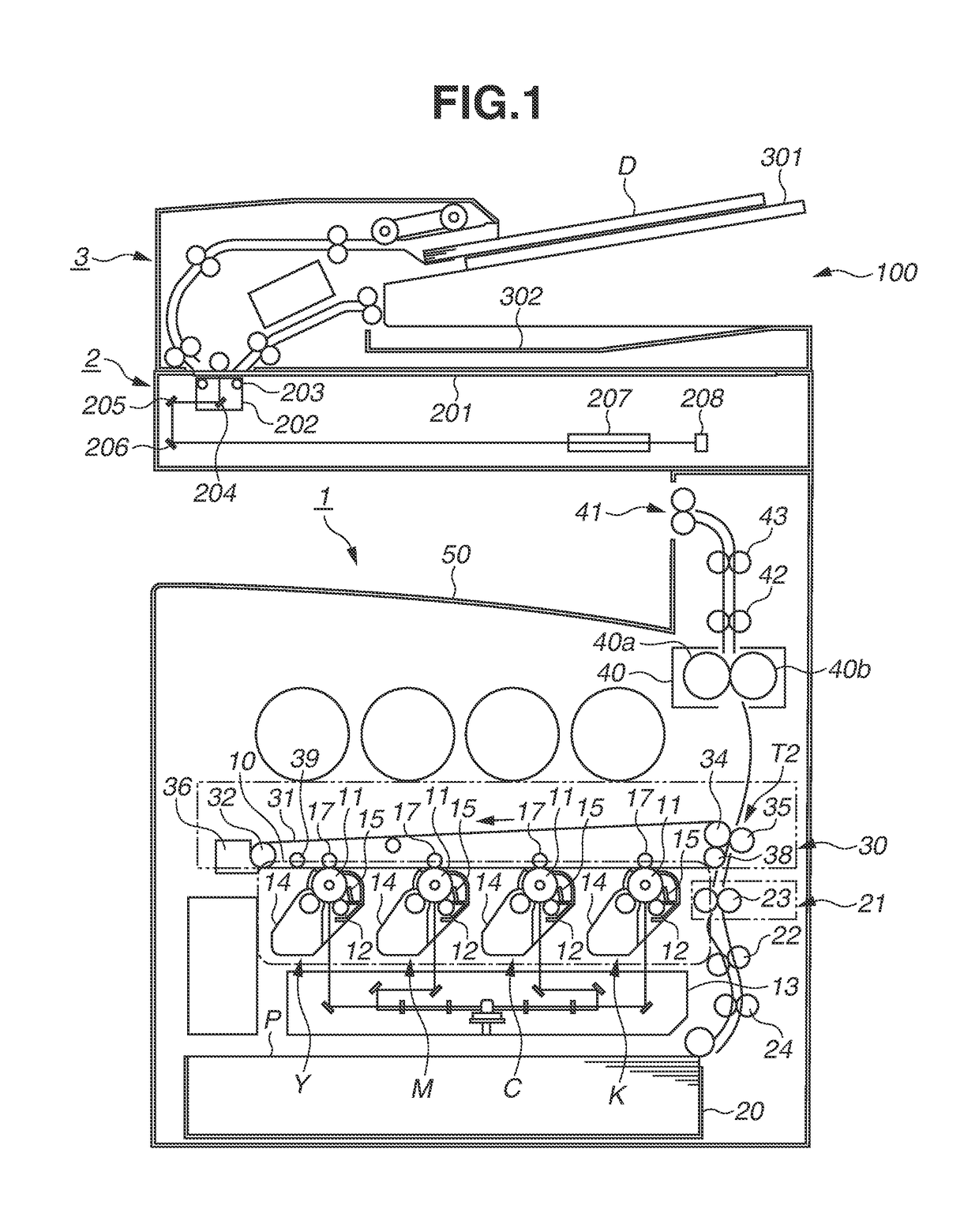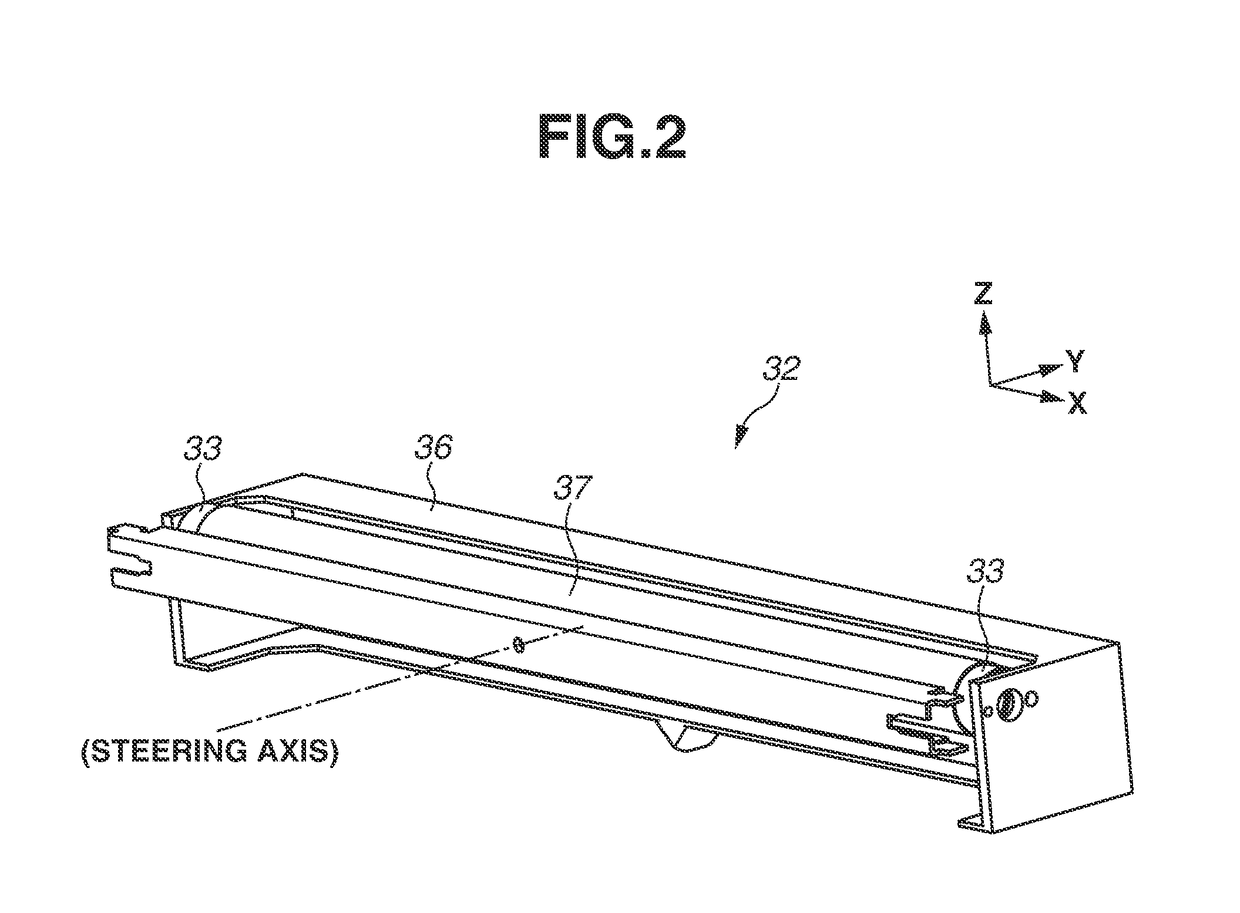Belt conveyance apparatus
- Summary
- Abstract
- Description
- Claims
- Application Information
AI Technical Summary
Benefits of technology
Problems solved by technology
Method used
Image
Examples
examples
[0094]A simulation performed to confirm the effects of the present exemplary embodiment will be described below. A simulation for calculating the steering performance according to an example satisfying the conditions of the present exemplary embodiment and the steering performance according to the comparative example illustrated in FIGS. 3A and 3B will be described below.
[0095]According to the example, 5.6 mm (L2=175.8 mm) was set as the sliding width w2 of the intermediate transfer belt 31 on the sliding ring 33 on the side in the direction of the belt lateral movement during rotation of the intermediate transfer belt 31. The tilting rudder angle of the steering roller 32 in this case was calculated through the simulation. FIG. 9A illustrates the result of the calculation.
[0096]In the simulation, the taper angle at the ±90-degree positions of the sliding ring 33B on the Z′ axis line perpendicularly intersecting with the Y′ axis line illustrated in FIG. 7B was varied as illustrated ...
PUM
| Property | Measurement | Unit |
|---|---|---|
| Length | aaaaa | aaaaa |
| Fraction | aaaaa | aaaaa |
| Fraction | aaaaa | aaaaa |
Abstract
Description
Claims
Application Information
 Login to View More
Login to View More - R&D
- Intellectual Property
- Life Sciences
- Materials
- Tech Scout
- Unparalleled Data Quality
- Higher Quality Content
- 60% Fewer Hallucinations
Browse by: Latest US Patents, China's latest patents, Technical Efficacy Thesaurus, Application Domain, Technology Topic, Popular Technical Reports.
© 2025 PatSnap. All rights reserved.Legal|Privacy policy|Modern Slavery Act Transparency Statement|Sitemap|About US| Contact US: help@patsnap.com



